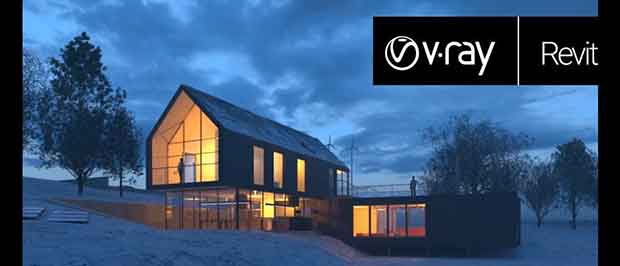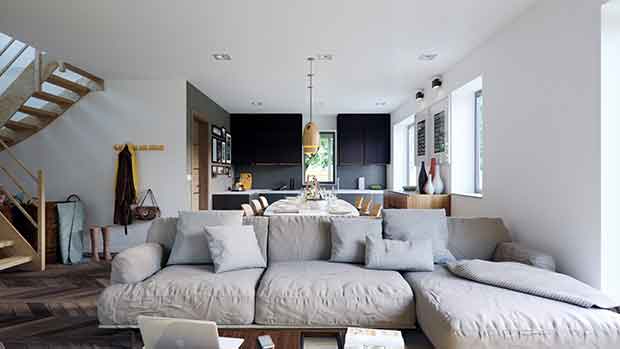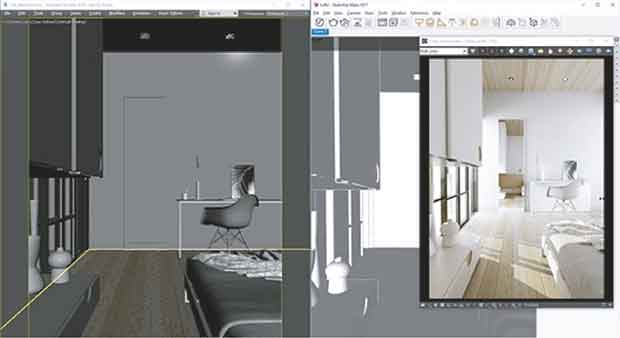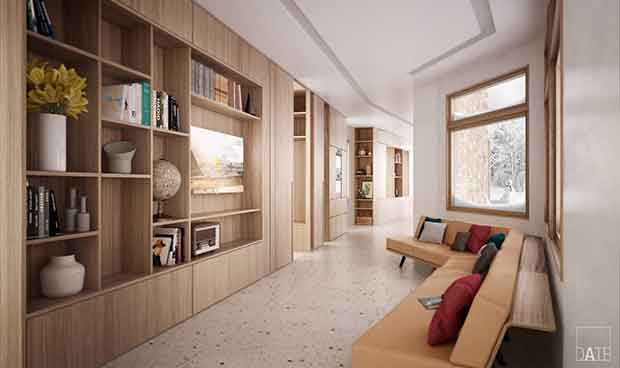We just finished our crack for Vray 3.4.01 Max 2017 & Vray for Cinema4D v3.4.01 & PhoenixFD v2.1.1 Vray 2.4 for 3ds Max 2013 – 2014, another work made by our amazing guys.
Its not tested in every sistem, so we’ll be very grateful to receive your feedback.
The crack works with the indicated Vray version (included in each zip file). If you find any problems, please leave us a comment with your OS version.
Please read the instructions carefully.
The instructions are included in each zip.
Download vray_2.0+patch-xf
(VRay 2.00.24261 for SketchUp – Windows and MacOS version *103MB*)
Zip Pass: xforce-cracks.com
Download VRAY_for_C4D_v3.4.01-xf
(Vray for Cinema4D – Windows and MacOS version *283MB*)
Zip Pass: xforce-cracks.com
Download PhoenixFDv2.1.1Vray2.4for3dsMax2013-2014
(Vray2 for 3dsMax 2013-2014 – Windows and MacOS version *45.4MB)
Zip Pass: xforce-cracks.com
Please read the instructions carefully.
The instructions are included in each zip.
Vray for 3dsMax & Cinema4D Crack & Keygen
Version of Keygen: v1.0.2
Release Date: 10/12/2018
Compatible with:
MacOS, Windows 7 (64b), Windows 8 & Windows 10
Cracked by xforce-cracks.com
What’s new in this V-Ray Next for 3DS MAX
It is the standard platform of visualization and 3D animation used worldwide by large and small companies of interior design, architecture, industrial design and advertising and also by film and video game producers.
A faster ray tracing means a faster representation. The core of the ray tracing is accelerated, so that calculations such as reflections, refractions and global illumination are faster. In addition, we accelerated light sampling, opacity maps, hair, and the representation of volumetric effects.
To render even faster, V-Ray includes Embree, the core of ray tracing from Intel. Embree accelerates photorealistic rendering, can shorten rendering times by up to 30%.
Dynamic split automatically reduces the size of the render bucket to maximize the use of all CPU cores.

3 Methods of creating carpets in Vray
In 3D applications, we have certain limitations and there are some things that are difficult to simulate in 3D, such as carpets, towels, etc. or any surface with very very small details.
In this tutorial you will learn 3 different methods to create realistic rugs in 3D Studio MAX and Vray. Using displacement maps, using the Hair & Fur modifier and using Forest Pack to achieve different effects and add realism to your renders.
Part 01: VrayDisplacementMod
- Basic modeling of the carpet using Editable Poly
- Creation of displacement maps to simulate the wrinkles of the carpet
- How to create high frequency displacement maps to simulate the “hairs” of the carpet
- Configuration of VrayDisplacementMod
- Creation of carpet material
Part 02: 3DStudio MAX Hair & Fur
- Hair & Fur by 3D Studio MAX
- How to “comb” our carpet by configuring the Hair & Fur options
- Creation of basic hair material
- Dynamics of Hair & Fur
- “Styling” options in Hair & Fur
Part 03: Forest Pack
- Modeling of the elements to distribute with Editable Poly
- Distribution of elements with Forest Pack
- Creation of materials
- Several examples of carpets with Forest pack
There are many tutorials and video tutorials dedicated to teaching how to use deep programs such as Sketchup and rendering engines such as Vray for Sketchup, 3d Max or similar, but the truth is that for a Commercial Interior Designer it is not necessary to know absolutely all the parameters of these programs.
Get infographics with realistic finish and not take much time is not so difficult, you just have to be clear that you are not infographic and do not intend to make super renders, only images that help your customers to see something as similar as possible to what It will be your business finished.

In Vray for Sketchup you can import and export the parameters adjusted for the rendering in a file (.visopt), which is very interesting and very useful, but if you do not know what the thing is going with, that there is some mismatch and not what You know how to fix, the file does not help you.
With this post “mini tutorial”, I intend to show you those few parameters that you must know in order to adjust Vray and have more than decent infographics.
What is Vray for Sketchup?
At this point I suppose you already know how to handle modeling programs like 3D Studio Max or Sketchup.
VRay is a rendering engine for the processing of scenes with a high level of reality. It offers the necessary resources to apply the necessary materials and lighting to your 3D to obtain realistic images of your designs.
In the post 7 computer programs that you need to control, I already told you that for me, Vray for Sketchup, is an essential program and, besides, very quick to manage (if you know how).
Configuring Vray for Sketchup
As I said before, I’m going to assume that you already know how to handle Sketchup and some Vray and I will explain directly the parameters that you have to adjust if you want to obtain infographics with the quality of the image above.
If after reading this post you still have doubts or problems to get this level of render, for the subject of materials or lights, I leave the tutorial of ASGVis, with which I learned.
I have to tell you that I did not learn overnight, that getting to the level I wanted took time and a lot of practice and that, with this post I want to help you not have to invest as much time as I did but still, you have have patience and practice a bit to get the results you want.
At the end of this post I leave you the link so you can download the .visopt with my configuration, so you do not “waste” a lot of time in configuring your Vray and you can start doing infographics with certain quality from now on.
Where to start
Well, “let’s go to the mess.” We start from the corresponding Sketchup file (in my case the hall of some offices), with its materials and lighting configured.

We open the Vray options editor and directly we go to the Output tab. In this tab you can configure the size of the image that we will obtain in pixels.
We can choose a specific size (because, for example, in the web where we are going to hang them we need 500x 500 px images) or we can render the size we are working with Sketchup, that is, the proportion that you see on your screen. computer when you’re working that program. For this last, we have to have deselected the size of the view (Override Viewport).

The only drawback of this is that, in general, very large images will appear and therefore very slow to render. What can you do? Then you start the rendering with the Override Viewport without clicking and when the rendering window comes out, you look at the size of the future render (top to center). Then you override the rendering process and return to the Output tab.
Then check the Override Viewport and put the previous size (in my case 1844×865 px). Click the “L” (lock) of image aspect ratio (relationship between height and width) and you can change one of the two values (width or height), which will maintain the proportion of your screen. I usually render about 1000×469 px). My computer takes about 8 minutes to make this infographic at this size.

If I am doing tests to see how a material or the lights are, I render it at a much smaller size, so that the computer takes less time to continue working. Or just render a part of the image with Region render (in the rendering screen).
The next tab that we are going to touch is that of indirect lighting (Indirect ilumination). The first thing is to select the “On” in the GI section, this will turn on the global lighting. Now let’s choose the two rendering machines that Vray needs to do the infographic.
As a primary machine, choose Irradiance map and as secondary, Light cache.
Irradiance map:
Here is a very important option related to image quality: Min Rate and Max Rate (Minimum and Maximum values). The maximum and minimum values by default are -3 and 0.
Min Rate: The minimum sample control for each pixel. The value 0 means that 1 pixel is 1 sample. A smaller value results in a smaller number of samples of an object, so the rendering qualities of shading, reflection and refraction are not very good. A higher value, on the contrary, will result in a higher quality but the rendering time will also be greater.
Max Rate: To control the maximum sample of each pixel. As before, the value 0 means that 1 pixel is 1 shows samples, etc. A lower value means that fewer samples are used to calculate the light. A higher value results in higher quality but also a longer rendering time.

I have established the values of -3 and -2, but I am changing them when I test materials. That is, if I want a quick rendering to see how a material is, I put a low level of value for the maximum and minimum values, for example: -6 and -5. Once all the fixes are correct, I return the values -3 and -2 to get the best final image quality.
Light cache:
It is used so that the secondary machine calculates the distribution of light in the scenes, it does not have too many adjustments in which to entertain (in fact I have it configured as it comes by default) and it renders quite fast.
With this and the .visopt file that I mentioned at the beginning, which you can download in this link, you already know everything you need to be able to do infographics with Vray for Sketchup quickly and without wasting time on things you do not need to know if you are not an infographic.

Download Links
Please read the instructions carefully.
The instructions are included in each zip.
Download vray_2.0+patch-xf
(VRay 2.00.24261 for SketchUp – Windows and MacOS version *103MB*)
Zip Pass: xforce-cracks.com
Download VRAY_for_C4D_v3.4.01-xf
(Vray for Cinema4D – Windows and MacOS version *283MB*)
Zip Pass: xforce-cracks.com
Download PhoenixFDv2.1.1Vray2.4for3dsMax2013-2014
(Vray2 for 3dsMax 2013-2014 – Windows and MacOS version *45.4MB)
Zip Pass: xforce-cracks.com
Please read the instructions carefully.
The instructions are included in each zip.
We believe that cracking and sharing softwares is something great and needed, but please never forget to support his creators. If you can afford the product PLEASE buy it =)
*—————–* !!!!! Accept no imitation / X-FORCE * * We are the world #1 !!!!! *——————*
**********************************************************************************************************